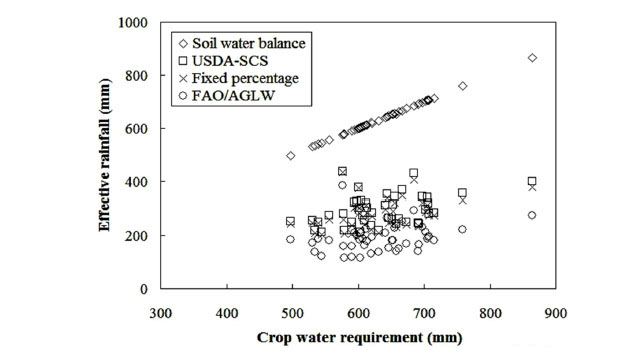Comparative Study of Green Water Footprint Estimation Methods for Thailand: A Case Study of Cassava-based Ethanol
Main Article Content
Abstract
Numerous water footprint studies published over the past decade have evaluated consumptive water use for various products and different contexts. Most of them are based on the FAO CROPWAT model using the USDA-SCS method for green water estimation. The proper estimation method of green water use is essential for improving accuracy of the results. In this study, the USDA-SCS, the Fixed percentage and the FAO/AGLW methods for the estimation of the green water use of cassava-based ethanol were compared against the daily soil
water balance method in order to test the suitability of these methods for water footprinting studies in Thailand. One ton of cassava-based ethanol product was set as a functional unit. The reference year of the data was 2010. The study has shown that the USDA-SCS, the Fixed
percentage and the FAO/AGLW methods underestimate the green water footprint by the average of 54, 56 and 70 percent, respectively. The effect of this will lead to overestimation of the blue water component of the water footprint and increase the opportunity costs of blue water
uses. Therefore, it can be concluded that all three methods commonly used for estimating green water use are not appropriate for the conditions in Thailand
Article Details
Published articles are under the copyright of the Environment and Natural Resources Journal effective when the article is accepted for publication thus granting Environment and Natural Resources Journal all rights for the work so that both parties may be protected from the consequences of unauthorized use. Partially or totally publication of an article elsewhere is possible only after the consent from the editors.
